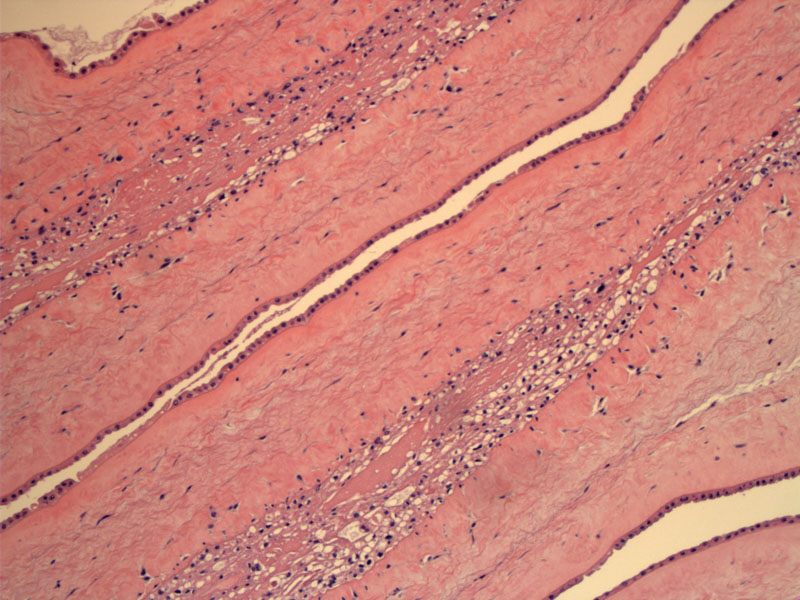

Diamnionic dichorionic (DiDi) dividing membrane contains central chorion sandwiched by two amnions.
Diamnionic monochorionic (DiMo) dividing membrane devoid of central chorion.
585 gram monoamniotic monochorionic (MoMo) single plate 17 cm twin placenta with one trivascular cord and one two vessel cord. Note the absence of a dividing membrane.
38 week twin pregnancy with two separate placentas. Morbidity and mortality is reduced in this type of placentation.
34 week twin pregnancy with fused diamniotic dichorionic (DiDi) placenta. Note the thick, opaque membrane separating the two placentas. If the placenta was diamnionic monochorionic (DiMo), the membrane would be much thinner and more translucent.
Twins can occur from two sperms fertilizing two ova (dizygotic or fraternal twins) or from the division of a single sperm fertilizing an ovum (monozyotic or identical twins). There are three types of placentas: diamnionic dichorionic (DiDi), monochorionic diamnionic (DiMo) and monochorionic monoamnionic (MoMo).
Chorionicity in MZ twins depends on when cell division occurs. If the fertilized egg splits early in development (within the first four days), then two chorions and two amnions will form, making a DiDi placenta. DiDi placentation can either be two separate placentas or the chorions can fuse to form a single placenta (fused DiDi). If division occurs between the 3rd and 8th day (after the formation of the chorion, but before the amnion), two amnions and a single chorion forms (DiMo). If division occurs after the development of an amnion (between 8th and 13th day), a single amnion and chorionic is formed (monoamnionic monochorionic placenta, MoMo).2
Again, note that all monochorionic placentas come from MZ twins whereas dichorionic placentas can arise from either MZ or DZ twins. All DZ twins have a DiDi placenta and the placentas can be separate or fused.2
Why is this important? The type of placentation is associated with infant mortality and morbidity. Monochorionic twins have higher rates of complications compared to dischorionic twins - due to both increased rates of birth defects resulting from unequal sharing in the twinning process as well as vascular anastomoses and unequal shunting of blood between fetuses (twin to twin transfusion syndrome). Overall, mortality rates in MoDi and MoMo twins have been reported as high as 10% and 40%, respectively.
• Placenta : Twin-Twin Transfusion
1 Kumar V, Abbas AK, Fausto N. Robbins and Cotran Pathologic Basis of Disease. 7th Ed. Philadelphia, PA: Elsevier; 2005: 1108.
2 Kraus TK, Redline RW, Gersell DJ. Placental Pathology: Atlas of Nontumor Pathology.
First series, Fascicle 3. Washington DC: AFIP; 2004: 250.
3 Baergen RN. Manual of Benirschke and Kaufmann's Pathology of the Human Placenta. New York, NY: Springer; 2005: 138-140.